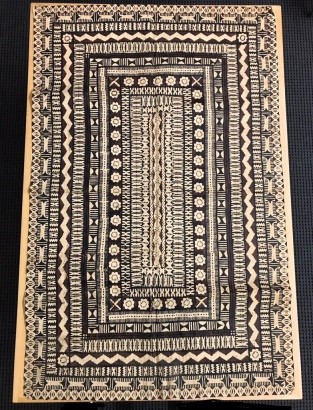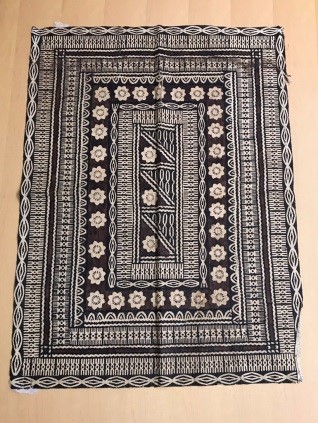Tapa cloth is a type of traditional Oceanic fabric that is made from the inner bark of the mulberry tree. The type of tapa cloth that is made in the Fijian Islands is specifically called masi, and this cloth is decorated using natural dyes and stencils to create intricate, meaningful patterns. High-quality masi may also be cooked to make the set the designs and make them color-fast.
Patterns on these two masi cloths include the makare, or comb design, which is a symbol of welcome and preparation for a special occasion; qualitoka, the concentric oval pattern, which represents the unity of people working together; and kali, the zigzagging lines, which represent comfortable relaxation.
Traditionally, masi cloth was used in everyday life in Fiji, for everything from bedding to men’s clothing to bandages. Today, however, masi is primarily made for special ceremonies. masi is used to welcome the birth of a child, as wedding clothes, and for funerals. Today the production of traditional masi is also an important source of income for Fijian women, who continue to keep this artform alive as a product for the tourist trade.

Fijian culture
Late 20th century
Mulberry bark and pigment, L. 1.84 m x W. 1 mm x H. 1.18 m
Wimmer collection #2015.3

Fijian culture
Late 20th century
Mulberry bark and pigment, L. 1.2 m x W. 1 mm x H. 91.4 cm
Wimmer collection #2015.4
For more information, you may contact the researcher(s) noted in the title of this exhibit entry, or Dr. Billie Follensbee, the professor of the course, at BillieFollensbee@MissouriState.edu
